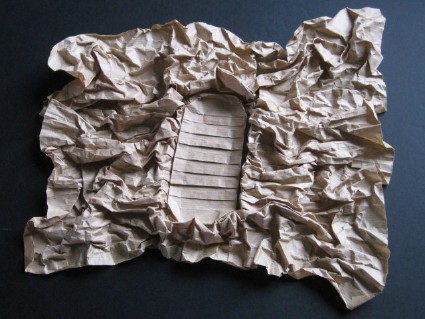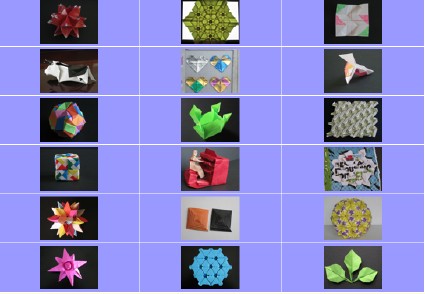
 | Welcome on MOOC-invitation |
|
| New! | An invitation to practice origami | map | Discovery of the world of folding paper Learning to fold |
| Back MOOC1 | Journey 2 | Sequence 4 | <--- page 5 | page 6 | page 7---> |
 |
Using crease-patterns |
| It becomes essential today for any origamist of good level to know how to decipher and fold a crease pattern. Indeed, the communication on the folding of a model is done more and more (or exclusively, for example for tesselations) using crease patterns. In the same way that there are experts in puzzles, riddles, Rubick's cubes and other tangrams, today there are origamists capable, at a glance on a crease pattern of recognizing the hidden folding and to deduce the afferent folding sequence. It can be a personal goal! Before reaching this point, it is useful to train by trying to solve crease patterns corresponding to simple folds (some valley and mountain folds), then to gradually increase in complexity. We learn quickly enough to recognize folds, corresponding to known situations: fbox pleating, open sink, arrangement of flaps, etc.). A full article can be read in English Folding From Crease-patterns by Gilad Naor. Some videos try to show how to do: - a « quick » example Folding Waterbomb Crease Pattern , by Hua Hua, 29 seconds Three videos labeled « beginner », very detailed, but with a speaker difficult to understand, but worth the hang of: - part 1 How To Read & Solve Origami Crease Patterns Tutorial by FearlessFlourish, a relatively simple fold pattern, 54 minutes - Part 2 How To Read & Solve Origami Crease Patterns Tutorial / by FearlessFlourish, a more complicated fold pattern, 17 minutes - part 3 /% https://www.youtube.com/watch?v=2EPpHL6ad90 % How To Read & Solve Origami Crease Patterns Tutorial by FearlessFlourish, a fairly complex fold pattern, 30 minutes There is no miracle: it is by folding from crease patterns more and more complex that one becomes familiar with their use! |